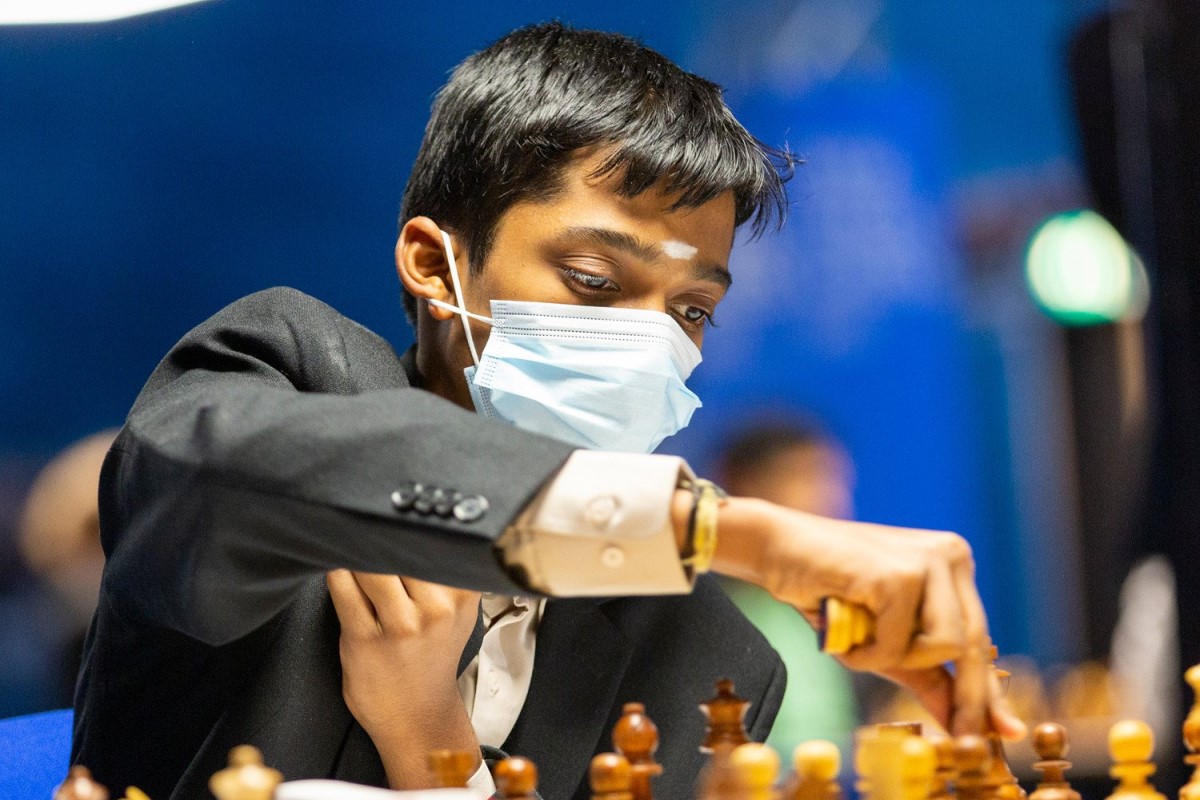


A former challenger to the World Championship, Sergey Karjakin has undoubtedly studied Magnus Carlsen’s strengths and weaknesses deeply — the Russian drew the world champion in the classical section of their 2016 match, only to lose the ensuing rapid tiebreakers. Facing the strongest player in the world on Wednesday, a 17-move draw out of a Berlin Defence indicated that Carlsen was more than happy to secure a half point with black against his well-prepared opponent.
Karjakin took to Twitter, jokingly noting that the draw will make it harder for his opponent to attain his new goal of reaching a 2900 rating:
— Sergey Karjakin (@SergeyKaryakin) January 26, 2022
The quick draw gave Anish Giri a chance to catch the leader, but to do so he needed to beat Polish star Jan-Krzysztof Duda. In a queenless, imbalanced position, none of the contenders faltered, which resulted in a 38-move draw.
Thus, with three rounds to go in Wijk aan Zee, Carlsen is still a half point ahead of Giri, while Shakhriyar Mamedyarov and Richard Rapport still have outside chances of taking home the title, as they stand a half point further back.
Carlsen’s quick draw was the exception rather than the rule in the Masters’ tenth round, as plenty of fighting chess was seen on the remaining boards.
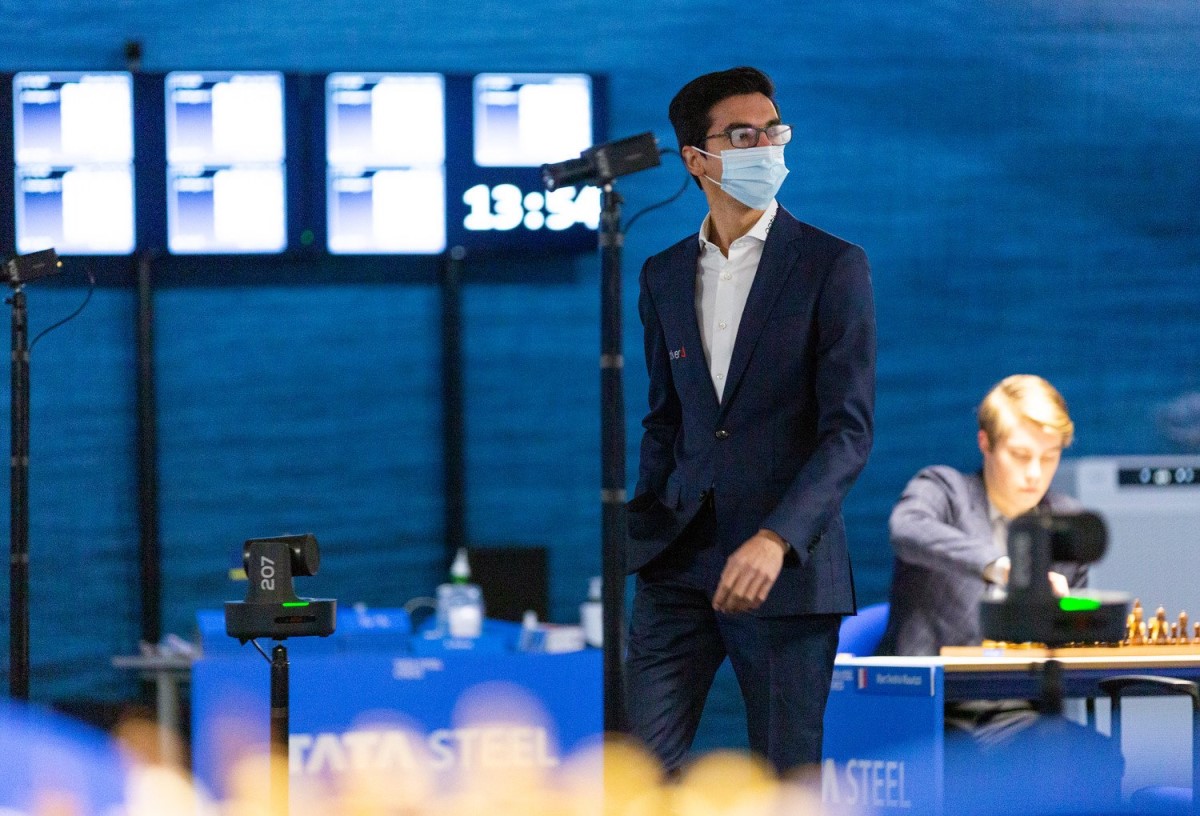
Well within striking distance — Anish Giri | Photo: Jurriaan Hoefsmit
After five rounds, Rapport was one of three players sharing the lead on 3½ points. A loss against Carlsen and three draws in a row left him 1½ points behind the leader, but his win, with the black pieces, over Fabiano Caruana on Wednesday left him within striking distance of the world champion — albeit with many things needing to go his way for him to actually win the whole tournament.
Out of a rarely explored line, Caruana deviated on move 9. Rapport, who was surely looking for a fighting game, spent over 21 minutes deciding whether to swap queens on move 10 or not. The Hungarian finally decided to go for the exchange.
The resulting position was not without complexity, however, and it was Caruana who played imprecisely first.
Natural-looking moves like 21.b3, 21.h3 or especially 21.Rhg1 are good for White in this position, while Caruana’s 21.Rd4 invites the forcing sequence 21...Nxg4 22.Bxg4 e5
An excellent intermediate move for Black, the pawn push allows him to regroup in the ensuing endgame — where Rapport also gets a bishop for a knight in a position with play on both flanks of the board.
There followed 23.Rd2 fxg4 24.Nd3 Rh6 25.Nxe5 Re6 26.Nxg4 Re4
Rapport temporarily gave up a pawn (he got it back shortly after) to activate his pieces, with the bishop and the queenside rook a couple of moves away from joining the struggle.
The conversion was by no means trivial, but Rapport’s kingside connected passers ended up giving the Hungarian an all-important victory over his famed opponent. Rapport will get the white pieces against Daniil Dubov in Friday’s eleventh round (Thursday is a rest day).
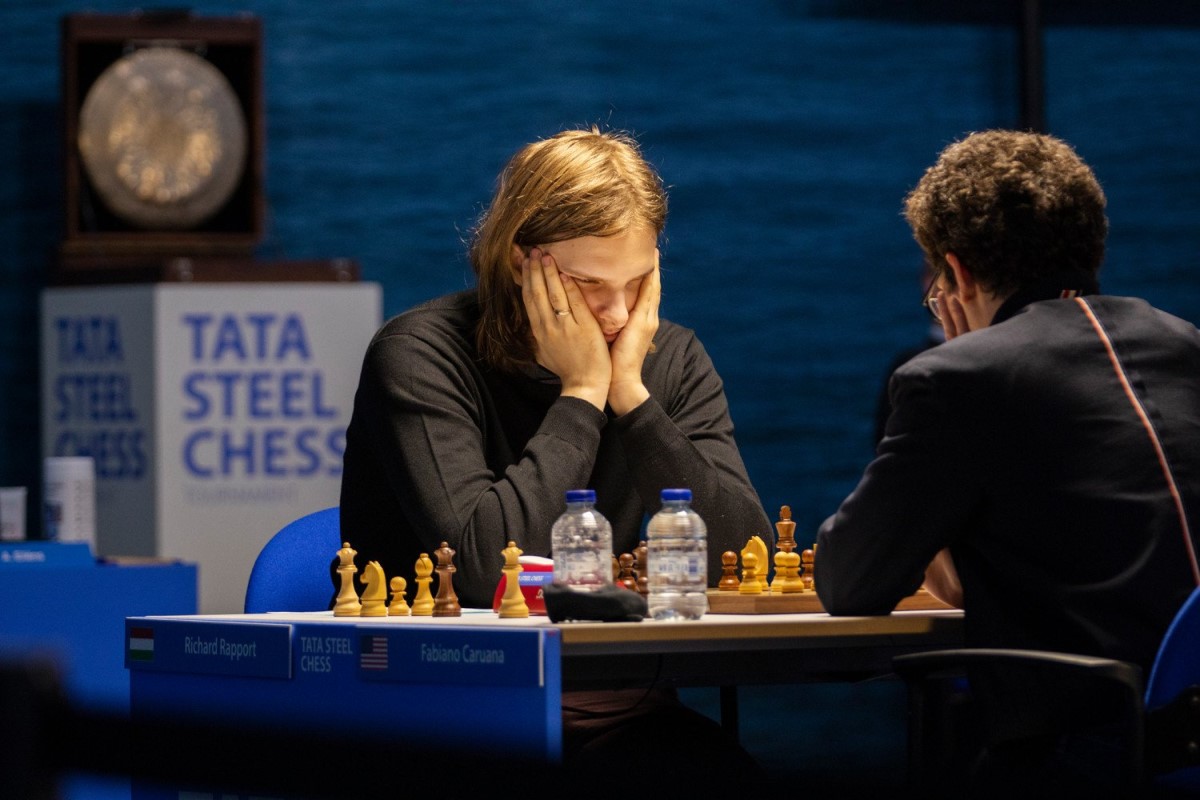
Richard Rapport | Photo: Jurriaan Hoefsmit
Young Praggnanandhaa — he will turn 17 this year — is having difficulties facing his more experienced, higher-rated opponents. Nonetheless, his two victories so far in the tournament prove that he has what it takes to face such a daunting task. In round 10, he took down his compatriot Vidit Gujrathi with the black pieces.
It was a lengthy, double-edged battle, in which it was apparent that Vidit wanted to keep alive as many winning chances as possible. A position with opposite-side castling ensued, with Vidit getting an extra pawn in the middlegame. But Pragg is not one to shy away from playing actively, and once the time control was approaching, it was the younger Indian the one who had the upper hand.
King safety is key in a double-edged struggle, and clearly White’s monarch is the vulnerable one here. Unfortunately for Pragg, though, he missed a killer idea in this position, as 37...Ra8, threatening an eventual ...b5-push, was a winning move.
Pragg’s 37...Qh1 was not his only error in conversion — albeit he still was slightly better — but the teenager from Chennai showed true grit to eventually get a 78-move win (!) over his more experienced compatriot.
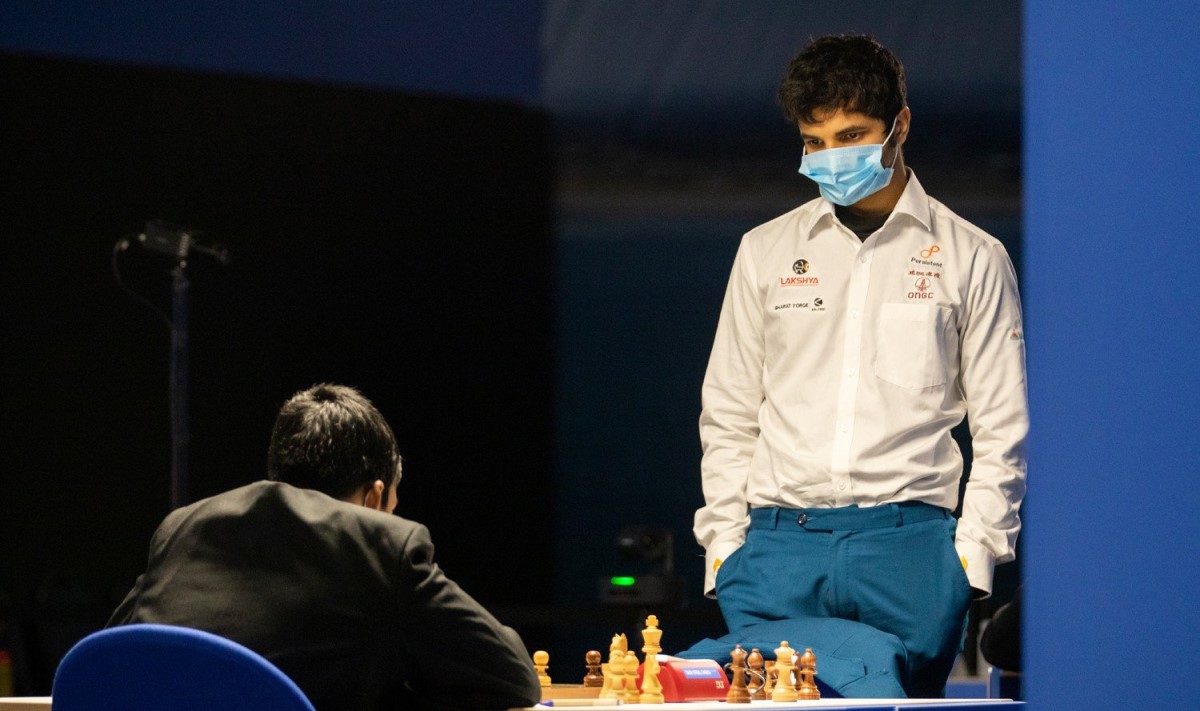
Vidit could not survive against Pragg’s energetic play | Photo: Jurriaan Hoefsmit
Facing the ever-fighting Daniil Dubov with the black pieces, Nils Grandelius needed no fewer than 82 moves to get his first victory of the event. Much like the Indian derby presented above, there were plenty of ups and downs in the sharp struggle (clearly, exhaustion is playing a role already), but a rush decision by Dubov in the endgame turned out to be the deciding final mistake.
Black has a knight for a pawn, but it does not look like White’s centralized setup will collapse anytime soon. Despite having plenty of time on the clock, Dubov spent only a bit over half a minute before erring with 76.Kf4 — when a move like 76.Re6 would have kept Grandelius looking for a way to break through.
Instead, after the text, Black had 76...Nh8, threatening a fork which gained him a couple of key tempi to regroup.
Grandelius soon grabbed the e-pawn, and did not need much longer to force his opponent’s resignation as Dubov’s rook had no place to go in the final position.
Exchanging the rooks loses, of course, while 83.Rh7 would be followed by 83...Kg8, trapping the all-important piece.
Besides Grandelius’ win, you can also go through Andrey Esipenko’s victory over Jorden van Foreest in the dynamic replayer below.
Replay all the Masters’ games at Live.ChessBase.com
Arjun Erigaisi is getting closer and closer to claiming the invitation to next year’s Masters tournament in Wijk. The Indian drew Polina Shuvalova in round 10, but kept his 2-point lead in the Challengers as neither Thai Dai Van Nguyen nor Rinat Jumabayev — his closest chasers going into the round — managed to win on Wednesday.
In fact, Rumabayev lost to 17-year-old Jonas Buhl Bjerre, allowing the latter to take his place in the two-player chasing group. Jumabayev gave up an exchange on move 20.
Given how quickly he played 20.Rxc6, it was clear that Jumabayev had this sacrifice in mind when he entered this line. White does get two pawns for the exchange, but Black will soon open enough lines for his rooks to become a real hindrance for White.
Bjerre showed great technical skill to convert his material advantage into his fifth win of the tournament. Now the Danish grandmaster knows that, had he not lost against Arjun in the eighth round (when he was forced to play a subpar manoeuvre due to the touch-move rule), he would be only a point behind the leader after this win.
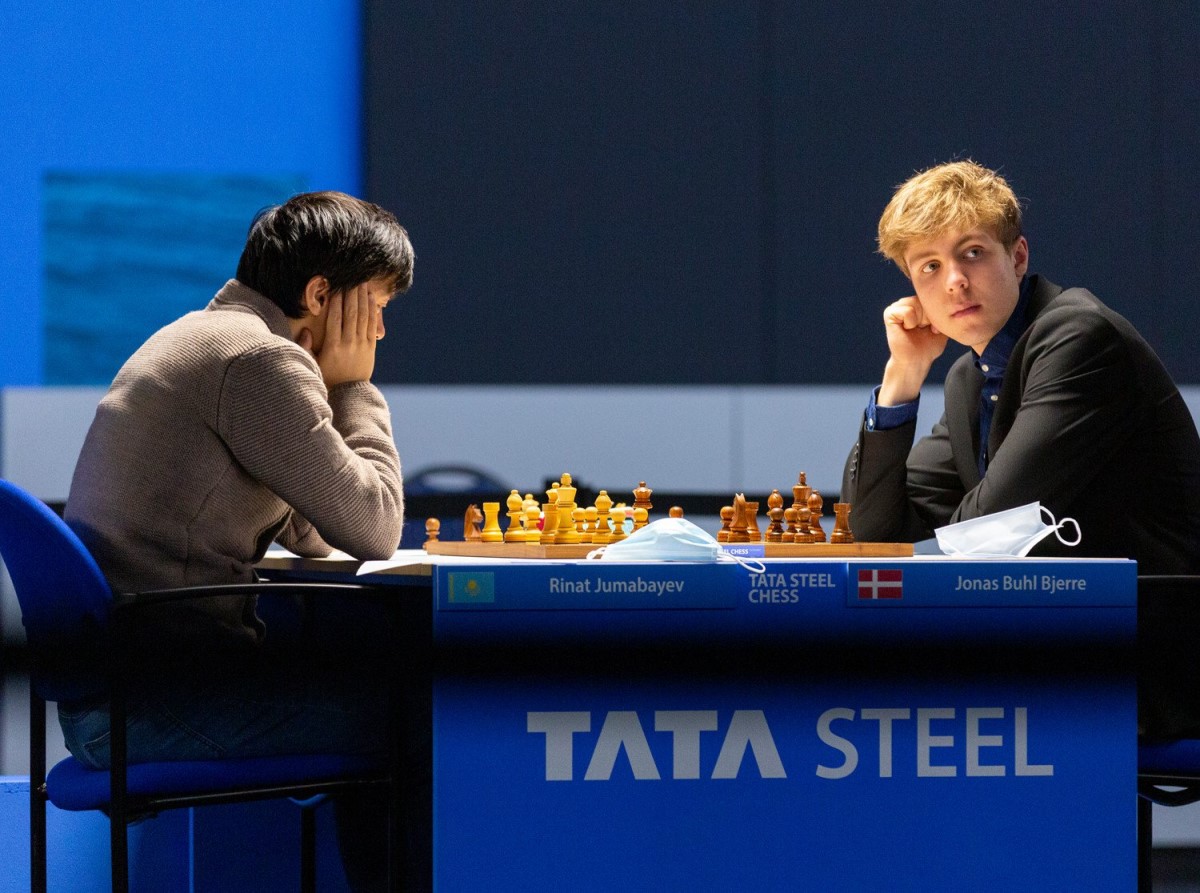
A key encounter in the Challengers tournament — Rinat Jumabayev facing Jonas Buhl Bjerre | Photo: Jurriaan Hoefsmit
Replay all the Challengers’ games at Live.ChessBase.com